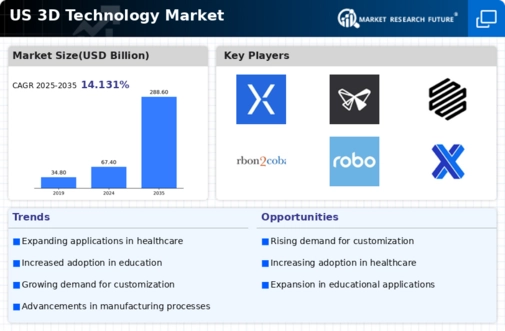The US 3D technology market has witnessed significant growth driven by advancements in manufacturing processes, increased adoption across various industries, and the continuous evolution of materials and techniques. Key players within this market are focusing on innovation, improving product offerings, and enhancing customer experience to maintain their competitive edge. Furthermore, the demand for rapid prototyping, custom manufacturing, and scalable production solutions has prompted many companies to invest in cutting-edge technologies such as additive manufacturing, 3D printing, and advanced scanning solutions.
The competitive landscape is characterized by collaborations, partnerships, and strategic mergers and acquisitions, as companies seek to bolster their market share and expand their capabilities.Nexa3D has established a prominent position in the US 3D technology market through its innovative approach to rapid production and high-performance 3D printing solutions. The company is known for its unique technology that leverages ultra-fast printing capabilities, allowing for the creation of complex parts at unprecedented speeds. Such strengths have enabled Nexa3D to cater to industries including healthcare, automotive, and consumer goods, where time-to-market is crucial.
The brand emphasizes its commitment to sustainability and eco-friendly practices, aligning its operations with the growing trend of environmentally conscious manufacturing. Furthermore, Nexa3D has successfully positioned itself as a leader in resin technologies, attracting customers who seek versatility and efficiency in additive manufacturing applications.Formlabs enjoys a solid foothold in the US 3D technology market, recognized for its high-quality desktop 3D printers and comprehensive suite of materials designed for a range of applications.
With an array of products that include the Form 3 series of printers and a diverse portfolio of resins, Formlabs serves various sectors such as dental, education, and engineering. The company’s strengths lie in its ability to deliver reliable and accessible 3D printing solutions that empower designers and engineers to create and iterate rapidly. In recent years, Formlabs has expanded its offerings through strategic acquisitions and partnerships aimed at enhancing their material development and automation capabilities.
By maintaining a customer-centric approach and continuous innovation, Formlabs solidifies its reputation as a key player in the market, committed to shaping the future of 3D printing in the US.





















